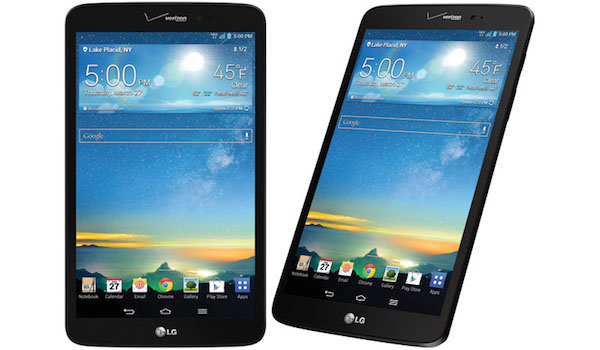You wouldn’t have thought that such a simple thing as displaying your Calendar could be so hard – yet this naturally personal view of each of our lives is utterly subjective – some people respond better to lines and shapes than to text, some prefer grids, some prefer lists, and so on. What is indisputable is that the bog-standard, default Android Calendar application is workman-like and uninspired – at best. Happily, the underlying data is easily used by third party replacements – but which one is the best? Here’s my top 5.
Before going on, I should declare that I’ve deliberately excluded any applications which try to import, or sync with, your Google Calendar data, in order to go further and take your appointments and reminders into new territory. While these (e.g. Sunrise Calendar) no doubt have their attractions, the duplication of data, the complication in the workflow behind the scenes, and the possible delays in getting Google data through into the new system make them unattractive – for me, at least. I want efficiency (in terms of bytes and time) and this means using/editing/adding to the standard Android calendar data directly.
I should also, perhaps, explain what I’m looking for in an effective Calendar application. I want the ability to see context – so many applications fall down by only showing too little of the data around a proposed appointment or event. What’s happening the day before, or in the days after – could something be rescheduled easily? And so on. Plus the application shouldn’t try and take over from Android’s built-in calendar and alarm handling (Cal falls down here) – again, it’s a subjective call from me, but I firmly believe that the simpler the system the better in the long run.
And so, without further ado, my top 5!
5 Jorte


Jorte, showing the default view and some of the toolbar functions…
Perhaps ‘complete freemium overkill’ might be a good subtitle for this application, since you can add extra modules, themes and extensions to your heart’s content, but its core is a very functional calendar replacement, with textual month/week/day views, and with everything collapsed as much as possible that you don’t miss anything. There’s even the flexibility to alter the ‘pop-out’ (from the left) Android command menu, plus the very colours and embellishments used in each view – Jorte is definitely one for confirmed fiddlers!


Powerful and customisable…
4 Google Calendar


Bold colours and panes, with the default schedule view and the standard filter/command pop-out
With bold ‘material design’ and a default ‘Schedule’ view that’s striking and useful, this first party calendar application from the big ‘G’ is arriving as the only calendar in Android 5.0 Lollipop, but in the meantime it’s a decent recommendation for older handsets and skins. There are a few small usability wrinkles, such as there being no way to easily create a new entry on a specific day from the schedule view, plus the ‘5 day’ and ‘Day’ views aren’t collapsed far enough to see a whole day at a time vertically (at least not on most current handsets). But doubtless Google will tweak this as OS 5.0 evolves, and everyone else will benefit through the app update.


The different views, including the pop-down month view, from the top, etc.
3 aCalendar


aCalendar’s month view, with decent text clues, plus control filters….
Defaulting to a really useful week view (just swipe through the seven day weeks), day and month views are also available, all theme-able and greatly customisable, yet without the interface looking like a dog’s dinner. Rather intuitively, swiping up and down moves through time, while swiping left and right moves between views around the currently selected date.


The default and well-thought out week view, plus some of the theme options…
2 Business Calendar


The terrific, active Year view, and the expandable multi-day view….
The ultimate power user’s Android Calendar, this even includes a full ‘Year’ view. Most innovatively, there’s a day zoom slider along the bottom – as you adjust this, the main ‘week’ view expands or contracts so that that you can see more or less information per day, at the expense of seeing less or more days at a time, of course. Impressively, although you don’t have to fiddle much to get Business Calendar working well, there are hundreds (literally) of detailed tweaks you can make to how new entries should default and how everything should be displayed. Hugely powerful.


The schedule/agenda view, plus some of the myriad of detailed settings…
1 Touch Calendar


Zoomed in quite a bit to the Touch Calendar ‘canvas’, plus a look at one of the supplied ‘dark’ themes, great at night time!
I have this obsession with context, as you’ll have gathered. It’s hard to plan anything when all you’re looking at are a couple of days or even hours. What’s most useful to most professionals, in the real world, is a wall chart calendar/whiteboard, onto which things can be scribbled in. Touch Calendar effectively becomes a huge calendar canvas, which can be multi-touch splayed in and out as needed. It’s all continuous in each dimension and means there’s no need for specific extra views. You only ever see the one view, but can zoom in or out and pan around as needed. Over-simplistic? Maybe, but it works terrifically well, and has recently had a full material design update. Customisations include various dark and other coloured themes, so your month ahead really can look as you want it to.


The material design pop-out pane, plus long pressing any spot on the canvas to kick off a new entry…
______________________
It should be noted that most of the applications above are available in free and premium/paid versions – I’ve linked to the free ones apart from the last, which is good enough to go straight to the commercial version (and doesn’t cost the earth). Paying more, as you’d expect, gives more functions and more customisation, especially visually.
















